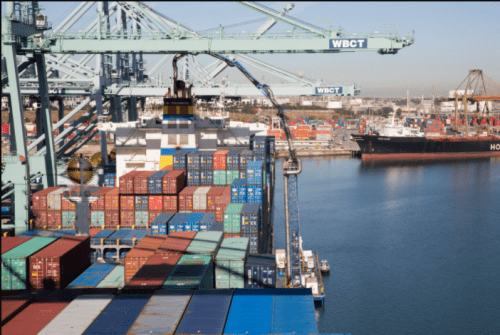Cargo volumes at the Port of Los Angeles, the busiest port in the United States, fell more than 30% in March as the COVID-19 crises increasingly hit the global supply chain.
The Port of Los Angeles moved 449,568 TEUs in March, a 30.9% decrease compared to last year.
For the first quarter of 2020, volumes have decreased 18.5% compared to 2019. It was the lowest amount of monthly cargo moving through the Port since February 2009, the port said.
“We’ve had two serious shocks to our supply chain system. First the trade war between the U.S. and China and now the COVID-19 pandemic,” said Gene Seroka, Executive Director of the Port of Los Angeles. “With U.S. retailers and cargo owners scaling back orders, volumes are soft even though factories in China are beginning to produce more. Amidst this public health crisis, there will be uncertain months ahead in the global supply chain.”
March imports decreased 25.9% to 220,255 TEUs compared to last year. Exports decreased 23.8% to 121,146 TEUs. Empty containers declined 44.5% to 108,168 TEUs. In total, March volumes totaled 449,568 TEUs.
The Port of Los Angeles and San Pedro Bay Port Complex remain open with all terminals operational and the U.S. Coast Guard is assessing all inbound vessels. The port is also currently serving as the temporary homeport of the Naval hospital ship USNS Mercy.
At the neighboring Port of Long Beach, March cargo volumes marked a 6.4% decline compared to March 2019, with 517,663 TEUs handled. Imports were down 5% to 234,570 TEUs, while exports increased 10.7% to 145,442 TEUs. Empty containers shipped overseas dropped 21% to 137,652 TEUs.
“Overseas health concerns over the coronavirus caused 19 canceled sailings to the Port of Long Beach during the opening quarter of 2020, which contributed to a 6.9% decline in cargo shipments compared to the first three months of 2019,” the Port of Long Beach said.
Copyright Ships & Ports Ltd. Permission to use quotations from this article is granted subject to appropriate credit given to www.shipsandports.com.ng as the source.
